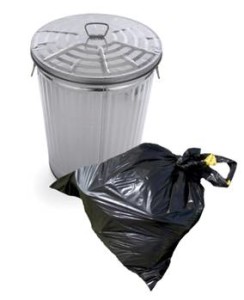As described in yesterday’s Clean Energy Works – Part I , we are very excited about participating in Clean Energy Works pilot program to help finance energy efficiency for old leaky houses like ours. The combined CO2 emissions saved would roughly equal our family driving from Portland to Washington D.C. and back each year. While we loved our cross-country road trip camping at national parks along the Lewis & Clark trail, I certainly wouldn’t want to emit that much pollution simply by living in our house each year.
With 5,900 cubic feet of air escaping per minute our house needs some serious retrofits. Here is a complete list of all the efficiency measures we will be taking, and the projected energy/CO2 saving:
Air Sealing – actually the most cost/carbon effective of the measures we will be taking.
- Air Sealing Cost – $585
- Projected Energy Savings – 168 Therms a year
- Projected CO2 Reduction – 2,260 pounds a year
Wall Insulation – Green Fiber insulation blown into walls from small holes in the exterior. This also helps reduce outside noise. Cost also includes a recommended kitchen range hood to vent heat (Cavaliere-Euro Z 30 Wall Mounted Range Hood.)
- Wall Insulation Cost – $2,850
- Projected Energy Savings – 127 Therms a year
- Projected CO2 Reduction – 1,710 pounds a year
Attic Insulation – includes Green Fiber insulation to R-value of R-50, and new bathroom fan (a Panasonic Whisper Green Fan for $250)
- Attic Insulation Cost – $1,840
- Projected Energy Savings – 100 Therms a year
- Projected CO2 Reduction – 1,327 pounds a year
Floor Insulation – our master bedroom is partly above the front porch and freezing!
- Floor Insulation Cost – $1,000
- Projected Energy Savings – 26 Therms a year
- Project CO2 Reduction – 350 pounds a year
Rim Joist Insulation – installing rigid foam insulation in the short wall between the first floor and basement, which is currently exposed.
- Rim Joist Insulation Cost – $500
- Projected Energy Savings – 12 Therms a year
- Projected CO2 Reduction – 161 pounds a year
Grand Total Cost – $7,675.00
Projected Energy Savings – 433 Therms a year
Projected CO2 Reduction – 5,828 per year
Thanks to our contractor, Marshall at EcoTech for helping convert the projected CO2 reductions! Energy Trust of Oregon is also doing all the grunt…I mean…paperwork for this project, so they deserve our kudos too.
Do you know if your home is sealed?
Do you think it would pay off to make the investment?
~*~*~*~*~*~
Sustainable Family Finances
The story of a family creating an abundant and sustainable life.



